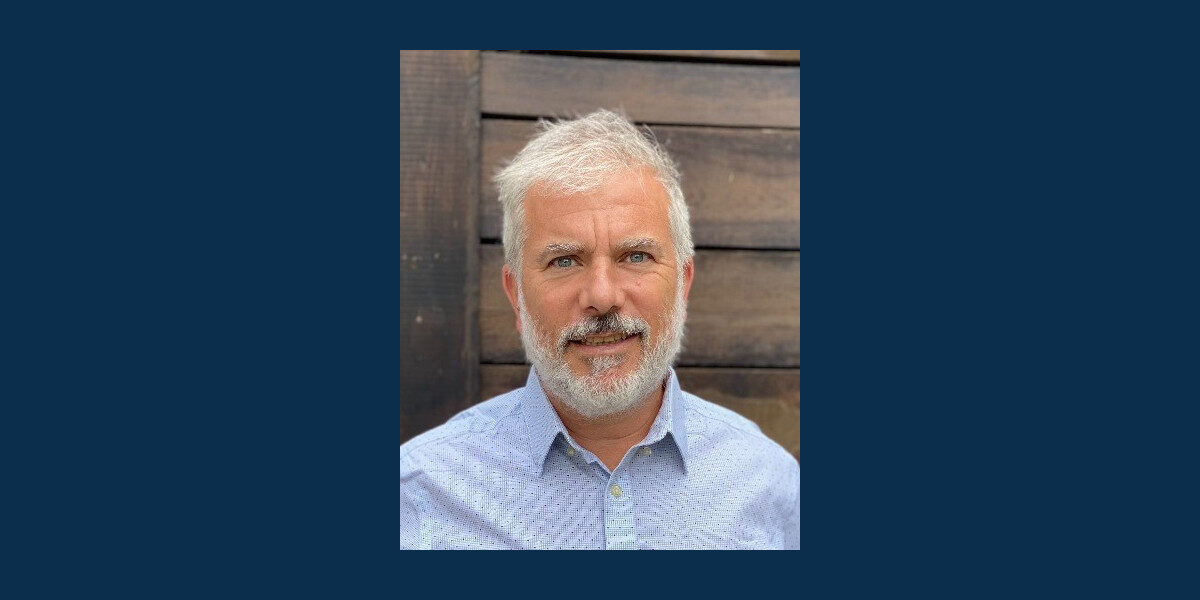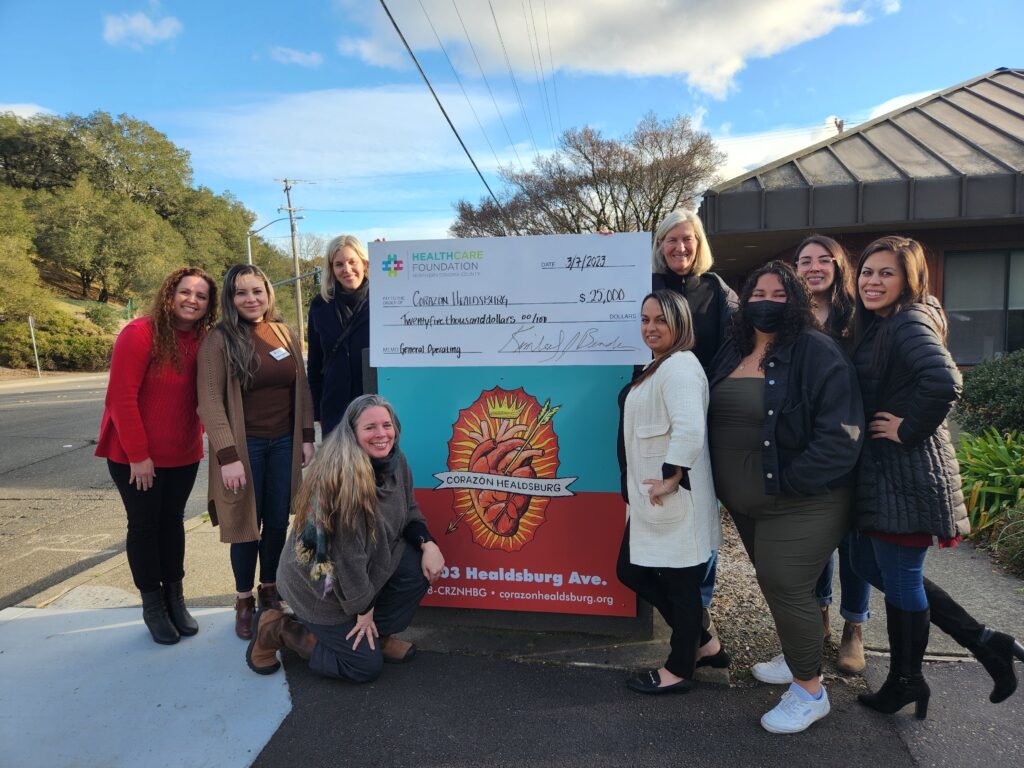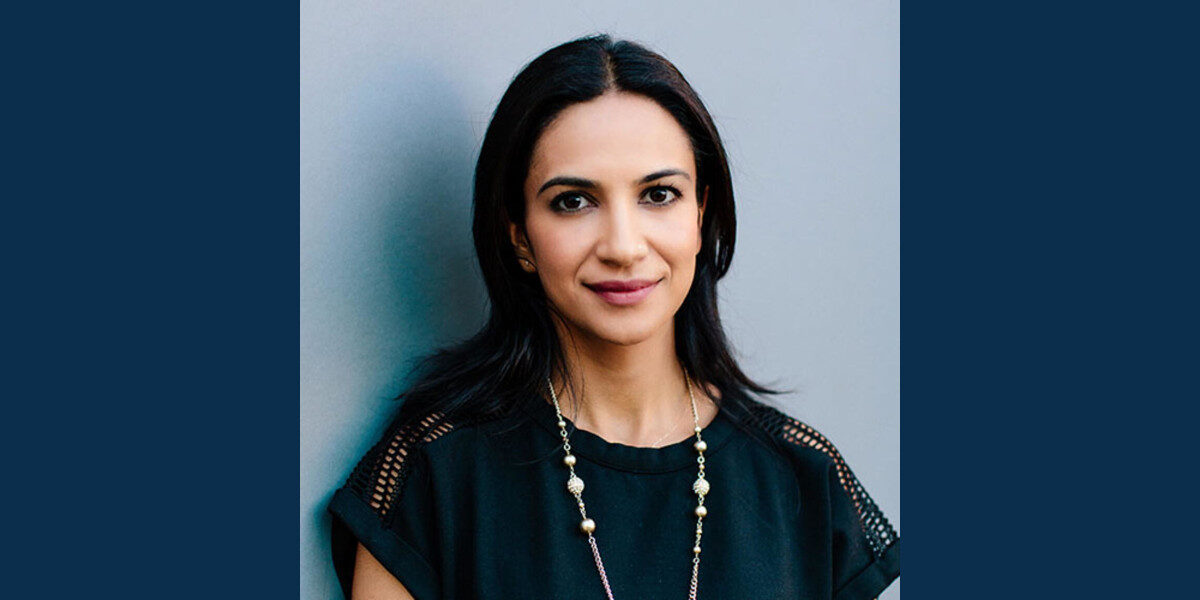

Community Partner Spotlight: Martín Rivarola
Martín Rivarola on the Community Health Worker / Promotores Movement in Sonoma County and Beyond
Martín Rivarola on the Community Health Worker / Promotores Movement in Sonoma County and Beyond
The Healthcare Foundation values the job of community health workers, or promotores de salud (CHW/Ps), for the unique and vital role they play in ensuring equitable access and care in our region’s healthcare and health services ecosystem. As the local public health response to the pandemic so clearly demonstrated, these frontline lay health workers serve a critical function as trusted, culturally competent community liaisons. Without them, many of our region’s most isolated and vulnerable residents would have limited or no access to beneficial, even life-saving information, resources, and services.
For this reason the Healthcare Foundation stands with efforts to support the professionalization of CHW/Ps, including the recognition, compensation, and training they need and deserve to best serve their communities and thrive in their roles.
The Community Health Worker Core Consensus (C3) Project is a nationwide effort to inform community health worker practice and policy. The C3 Project aims “to expand cohesion in the field and to contribute to the visibility and greater understanding of the full potential of Community Health Workers to improve health, community development, and access to systems of care.” To this end, the C3 Project promotes a single set of CHW/P roles and competencies in order to better support and sustain CHW/Ps in their health and social services settings.
The C3 Project’s recommendations, first unveiled in 2016, have so far been affirmed by over 15 national public health organizations and professional organizations, and taken up for use by 20 state policy initiatives and counting.
To learn more about how the effort to support and sustain CHW/Ps is developing locally, we spoke with Martín Rivarola, MPH, the Health Program Manager in the Public Health Division of Sonoma County’s Department of Health Services. Martín has worked in the CHW/P field in Sonoma County since 1999, as a community health worker and as a coordinator and supervisor of CHW/Ps.
In his current role at the County’s Department of Health Services, Martín oversees the implementation of a major grant from the CDC (“Community Health Workers for COVID Response and Resilient Communities,” launched in 2021) designed to put more trained CHW/Ps in the communities hit hardest by the pandemic and at high risk for exposure and illness—and, as Martín notes below, to build sustainability for these CHW/P jobs moving forward.
“This is my passion,” explains Martín, “I work for the CHWs that are here now, and for the CHWs that are coming in the future.”
Can you describe the main goal of the C3 Project?
One of the key purposes of the C3 Project is to bring cohesion to the field. The lack of cohesion means one person thinks promotores are this, the next person thinks they’re something a little different, and so on. That has hurt the development of the profession.
Community health worker is really an umbrella term that embraces many different job titles—one count I’ve seen recently from the National Association of Community Health Workers included 192 different job titles.
Locally, we’re doing a census to see how many community health workers we have—it’s not easy because of all the different job titles that fall under that term. I’ve had many experiences where I’m talking with a community-based organization and I say we’re doing a census and would like to know if they have a community health worker on staff, and they say, no, we don’t. When I inquire further about their personnel, they’ll say, we have a community outreach specialist. That’s one of the job titles underneath “community health worker.” That happens all the time.
How long have promotores been working in the healthcare setting?
The profession is strange in the sense that it’s very new, and it’s very old. The United States Department of Labor recognized the community health worker term, and incorporated it as a profession, only 12 or 15 years ago. That said, if you go back in time, lay health workers have been around forever. Community health workers, promotores de salud, we are ancient and very new at the same time.
There must be a variety of ways people with those job titles are trained. Is the effort to build cohesion also about creating consistency in terms of training?
Yes. The C3 Project has identified ten core roles. This is key to the effort. Because the lack of cohesiveness in the profession has meant that, to this day, you can walk into a clinic and find community health workers that are doing the work of a medical assistant. It happens a lot because, upstream, the supervisor does not know the role of the CHW/P, much less the director or the CEO.
So there are ten core roles and basically a definition that we’re all unifying around. The American Public Health Association (APHA) has a definition since 2009 that most of us have signed onto. It’s a long one but, in essence, the community health worker sits in the middle between community, on one side, and health and social services on the other. We’re the link, the intermediary, a bridge between the two.
The CDC’s CHW/P initiative specifically cites the Covid-19 response. Did the pandemic help clarify the role of promotores?
It sent us on a giant leap forward in terms of recognition that, up until the pandemic, we just didn’t have. The healthcare system realized that you need that person who is well-versed in community, that can relate to community on a peer-to-peer level. Having that person can link hard-to-reach populations to a tremendous amount of services—from providing critical information (what is Covid-19, basic prevention, and so on) to working on the frontlines of the vaccination campaign and the testing sites. We’ve been working in the shadows for years, centuries probably. This pandemic put a spotlight on us. It made that work very visible and proved our worth, too.

Can you say more about why the peer-to-peer relationship is important?
You wouldn’t have a doctor out in the plaza distributing flyers to families. It wouldn’t make a whole lot of sense. Aside from the economics of it, if you put a medical doctor outside a kindergarten as the moms are picking up their kids, to engage in conversations with them, you have a top-down relationship that you just can’t escape. For that mom, you’re a doctor. To dismantle those perceived barriers, it’s going to take you a lot of effort, if it can be done in the first place. But a community health worker is part of the community. When we talk to the mom we are peer-to-peer, there are no barriers there. That provides a way of engaging with that mom around Covid that is unmatched in the health sector.
I can give you an example. As a CHW/P, I was a community organizer for Santa Rosa Memorial Hospital, St. Joseph health system. This is in the late 1990s. Later I became a CHW/P supervisor and coordinator. At that point I noticed something. We had promotores who would meet with a group of moms, say, with children in preschool. They would deliver the curriculum that was given to us about how to teach the harms of sugary drinks in order to reduce their consumption. The curriculum will say, “Turn to the audience and tell them that they need to reduce their consumption of sugary drinks.”
Now, the thinking here was that, because you’re not telling them to cut out all sugary drinks (which is a very difficult task) but only to reduce their intake of sugary drinks, this was a huge leap forward in teaching the communities and obtaining results. We were thinking we were so advanced saying this! But as the promotora would be saying, “You need to reduce your sugary drinks,” I’d be watching the faces of those moms, how they responded to that “you.” They started to tune out. If there is a “you,” there must be an “I.” What the promotora unknowingly did was raise a barrier between herself and those moms in attendance, the community—essentially killing the biggest asset that a promotora has, which is the ability to connect on a peer-to-peer level.
I will tell my promotoras, the moment you say “you” in a community setting, you just threw away your biggest strength. If we lose that peer-to-peer connection, you might as well be talking to an empty room. The chances of that person engaging in behavioral change, the hardest thing to do in this world, is radically reduced. They’ll tune you out in a second.
This approach is in line with the great Brazilian educator, Paulo Freire [Pedagogy of the Oppressed], his model of popular education. In community settings, with CHW/Ps, it’s always “we.” “We have an obesity problem. We have a hypertension problem.” People will relate. You’re starting the process of creating credibility with the community. True engagement will only happen once you have that.
CHW/Ps act as a bridge between community and the healthcare system. Does that bridge run in two directions, also bringing information back to the healthcare system?
Most definitely. Getting information from the health or social services system out to the community is one of our roles. But another is to take the concerns, the viewpoints, the strengths of the community back to inform the health and social services systems. It’s a critical element. That’s one of the things that CHW/Ps can provide that nobody else can.
Unfortunately, organizations rarely if ever establish the pathways to be able to do this in a formalized, thoughtful way. At best it’s impromptu. There are no specific channels for bringing back the knowledge that the CHW/P is gaining. We are essentially missing a key element of the role of CHW/Ps, the ability to bring back what they’re learning from the community. We’re missing a great opportunity.
Are there other challenges to achieving professional cohesion?
We still have trouble with integration of community health workers in the work setting, period. We need to make sure they are getting respect and feeling valued as key members of a health and social services team. More often than not, we’re still dealing with the turnover that is caused by poor integration of the CHW/P. They’re being put in positions outside of their scope of work—the ten identified roles—and being assigned either menial tasks or ones that require training that they are not given. I’ve seen CHW/Ps put in roles where they never leave the clinic. This is to miss the point and the power of the CHW/P. We work with those persons that are not coming through the door. We serve those that are not well integrated into the health system; those that are missing their appointments; those that are outside of any healthcare whatsoever. That’s where the community health worker is at her best—in community, not trapped inside the four walls of a clinic.
More generally, the lack of a common framework is the biggest gap we have right now in Sonoma County. We are doing a lot of the right things but sporadically, on impulse, not under a common framework. That hurts the profession.
What about sustainability?
The grant from the CDC that I manage is for workforce development. We’re funding 19 full-time positions with CHW/Ps. The CDC recognized the value of CHW/Ps during the pandemic, and wants to help make the most of this powerful health intervention. It’s a $6 million grant over three years. I’ve been around the field for a long time. I’ve never seen funding at this level. But it wouldn’t serve much purpose if, when the funding ends after August 2024, all of these CHW/Ps are simply laid off again. So we’re working hard on the sustainability element.
I believe sustainability and a common framework go hand-in-hand. When upper management, from supervisors on up to CEOs, have a clear understanding of the nature and role of community health workers, then those positions are mission-aligned. They are part of the big picture.

Related News + Stories
Invest in Our Community
Your support is vital to our collective vision of eliminating health inequities in northern Sonoma County.
Donate



